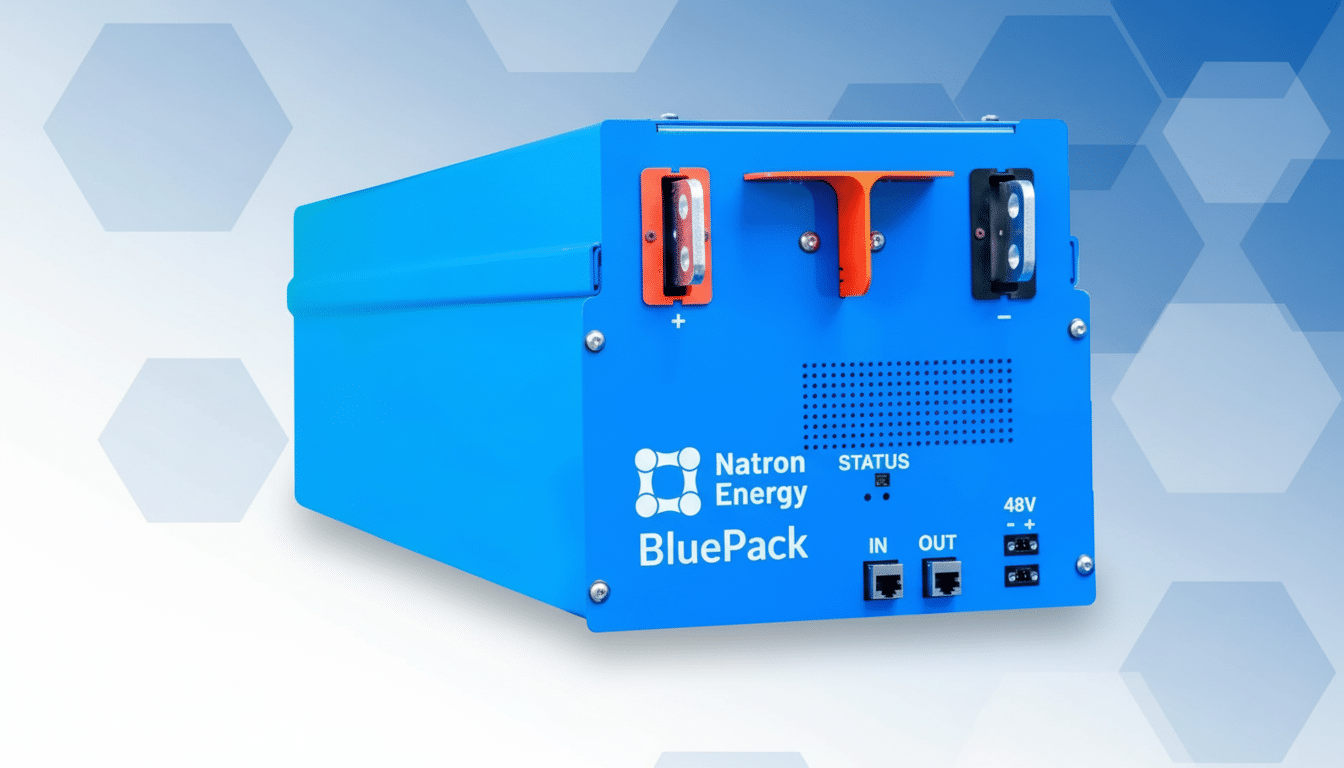Natron’s liquidation is more than a startup flop; it’s a stress test the United States battery ecosystem just failed. The source of the sodium‑ion pioneer had customers lined up, a factory in the United States, and book orders in hand. What it lacked was the connective tissue the country had still not built: predictable time lines for certification, bridge financing for first‑of‑a‑kind manufacturing and a supply chain that can move at industrial speed.
Local reports in North Carolina highlighted the company’s backlog of about $25 million that it could not ship without UL’s certification — standard safety and risk certifications that can take months to obtain. And investors weren’t willing to pony up to fund the wait, so Natron will wind down — despite solid demand for its Prussian Blue–based sodium‑ion cells for data centers and stationary storage.

Cert delays face down FOAK finance reality
Battery products coming into the U.S. market usually require UL 1973 (stationary batteries) and UL 9540/9540A (energy storage systems and thermal runaway testing). These are important guardrails, but the process is slow, and there are long lines. For a manufacturer burning millions each month in staff, lease, insurance and utilities, it can be existential to be delayed by one or two quarters.
Policy design compounds the pinch. The production tax credit for cells (45X) is paid out per kilowatt hour shipped — which is great once qualified product is flowing, but useless for the pre‑certification cash crunch. DOE’s loan office can support big projects, but its scrupulousness requires off‑takes, permits and demonstrated readiness. That has left a first‑of‑a‑kind factory marooned in the classic “valley of death,” too tested for R&D grants and too risky for conventional project finance.
Asia’s size advantage remains extraordinary
And even when startups throw their entire resources into reaching full certification, they bump up against scale economics that have been crafted over decades in other countries. The International Energy Agency estimates that China dominates most anode and cathode production — and most of the world’s cell output. That width translates to less-costly materials, faster delivery of equipment and vendor networks that know how to dial in yield.
Market dynamics haven’t been kind to novel chemistries. Benchmark Mineral Intelligence has charted a plunge in the price of lithium carbonate — a drop of around 90% from recent highs. That wiped out a lot of sodium‑ion’s near‑term cost pitch, because lithium‑ion incumbents could gut their prices while continuing to enjoy a maturity edge in performance, warranties and bankability.
There’s also the machinery problem. Production of cells includes process specific coaters, calendering lines, formation equipment and dry room systems. A lot of the fastest, cheapest kit comes from Asian companies. Mature factories ramp with yields north of 90% in short order, young factories start much lower and burn cash until the processes stabilize. Without deep pockets or soul mates, that ramp is a cliff.
Policy whiplash and frail demand signals
Industrial policy is better but still spotty. The Inflation Reduction Act and 48C advanced manufacturing credit have provided announcements, but disbursements, local permitting, grid interconnection and fire code compliance chug along at different velocities. The demand that UL 9540A testing is now additionally requested by the authorities having jurisdiction adds one more step to something that already most startups don’t get around to underwriting in early-stage budgets.

Buyers “want bankable tech” on the offtake side. Utilities buy on multi-decade cycles, and with stringent safety standards.” High uptime guarantees and certified systems are required in the datacenters. With limited performance histories and no tier‑one balance sheet, new chemistries find it difficult to clear procurement gates. (see the recent filing for Chapter 11 of a american integrator not being able to source non‑Chinese LFP cell, and the recent loss of marque automotive orders of a european champion due to inability to produce) and only reinforces the caution of the buyer.
What Natron’s demise tells us about the U.S. playbook
For starters, certification requires a fast track. A federally funded program that provides matching-funds for safety testing of new chemistries, reserves lab space, and the scheduling of UL 1973/9540/9540A tests could cut time‑to‑revenue down to a matter of months. National labs and UL Solutions could run joint testbeds, so startups aren’t stuck in lines during important burn periods.
Second, bridge financing must be purpose‑built. Milestone‑based working capital — for pilot runs, safety testing and initial customer qualification — would close the FOAK gap that 45X and conventional loans overlook.The combination of the Department of Energy and state green banks could syndicate this with private lenders to set the risk price correctly.
Third, anchor demand should be based on contracts that have been signed, not aspirations. Public power authorities, federal installations, and hyperscalers can offer multi‑year, conditional off takes, which begin upon proof to be certified. Strong demand signals drive down the cost of financing and justify orders for tooling long before the full commercial release.
Finally, partnership beats pride. Joint ventures and licensing with established manufacturers from across Asia and Europe — Panasonic and LG Energy Solution, SK On and others — supercharge learning, yield and open up equipment and materials at scale. That model established U.S. automotive cells; it may be the most realistic pathway for stationary batteries and alternative chemistries until a domestic vendor base matures.
Natron’s chemistry remains appealing for applications for which power density, safety and cost trump energy density — anything short‑duration grid storage, to lift trucks to data centers. Its death doesn’t damn the technology; it damns an ecosystem that hasn’t brought standards, finance, supply chains and buyers into alignment. America’s battery ambitions will be more announcement than industry — and more start-ups will run out of time before they run their lines — until those pieces click.

